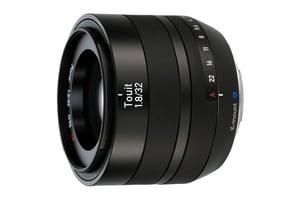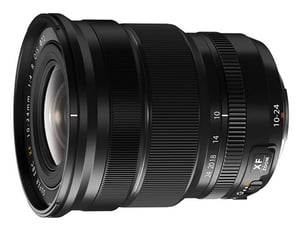This is an in-depth review of the Fujifilm XF 14mm f/2.8 R, a 21mm full-frame equivalent wide-angle lens that was introduced in September of 2012. Although the lens has not been updated for many years now, it has been considered to be one of the best in the Fuji X...
Cameras and Lenses Category Archive - Page 37
Zeiss Touit 32mm f/1.8 Review
Zeiss introduced its Touit 32mm f/1.8 lens together with the 12mm f/2.8 for Fuji X and Sony E camera mounts in April of 2013. With its 48mm full-frame equivalent field of view, the lens fits the definition of a "standard" lens - a popular focal length for everyday photography needs....
Nikon Z 14-24mm f/2.8 S Review
Nikon makes some seriously good ultra-wide lenses. The F-mount 14-24mm f/2.8 is often considered one of the best wide zooms ever, and the wide-angle Z lenses we've seen so far have also been fantastic. But how does the Nikon Z 14-24mm f/2.8 S compare? The short answer is that it's...
Nikon Z 50mm f/1.2 S Announcement
Along with the Z 14-24mm f/2.8 S, Nikon also introduced its first modern professional-grade f/1.2 lens, the Nikon Z 50mm f/1.2 S. Nikon has not been able to make f/1.2 lenses with autofocus capability on the F-Mount due to a small throat size and long flange distance (see my article...
Nikon Z 14-24mm f/2.8 S Announcement
As previously indicated on the Nikon Z lens roadmap, the ultra-wide angle Nikon Z 14-24mm f/2.8 S zoom lens has finally been unveiled today, and it looks pretty incredible. At just 650 grams of weight, it looks like Nikon has been able to make a lens that is both lighter...
Sony A7C Announcement
Today Sony announced its smallest and lightest full-frame mirrorless camera, the Sony A7C. Sporting a 24 MP BSI-CMOS sensor, a BIONZ X image processor, 5-axis image stabilization, 10 FPS continuous shooting speed and 4K video recording capability, the Sony A7C is a very capable camera with an incredibly small footprint....
Zeiss Touit 12mm f/2.8 Review
Zeiss announced its Touit line of lenses in April of 2013 for Fujifilm X and Sony E APS-C mounts. The Zeiss Touit 12mm f/2.8 was released together with the 32mm f/1.8 lens, while the third 50mm f/2.8 Macro came out a bit later in January of 2014. Sadly, Zeiss has...
Fuji XC 16-50mm f/3.5-5.6 OIS II Review
Fujifilm updated its XC 16-50mm f/3.5-5.6 OIS with the OIS II version in January of 2015. Sporting an all-plastic design, this compact and lightweight kit zoom lens was designed to be used with Fuji's entry-level X-series cameras for everyday photography needs. It came in two different colors (silver and black)...
Fuji XF f/1.0 R WR Announcement
It is an exciting week for the Fujifilm fans because the company announced its fastest prime lens for the X mount - the Fuji XF f/1.0 R WR. This is a significant milestone for the company, as it is the world's first f/1.0 mirrorless lens with autofocus capabilities. Obviously, a...
Fuji XF 10-24mm f/4 R OIS Review
The Fujifilm XF 10-24mm f/4 R OIS is an ultra-wide angle lens designed specifically for the Fuji X cameras with APS-C size sensors. Announced in December of 2013, the lens is aimed for landscape and architecture photographers who are looking for a compact and lightweight lens with great image quality....









